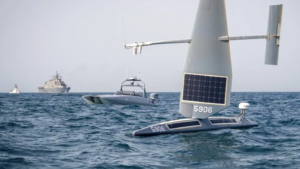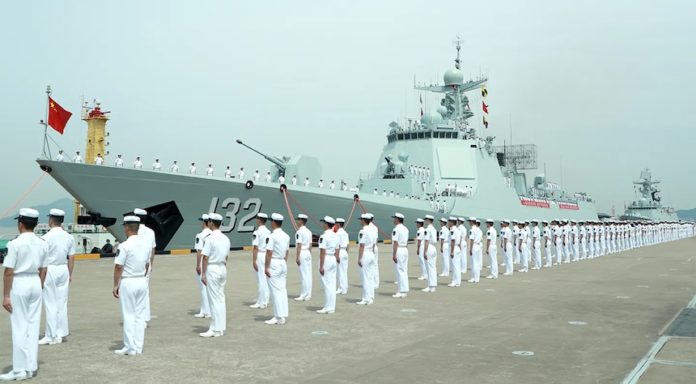To keep up with China’s military developments and deter any potential invasion of Taiwan, the U.S. began developing new weapons.
U.S. military officers have stated repeatedly that China is their main “pacing problem” for engagement and development. This means that Beijing is a rival making significant progress toward challenging U.S. defense strategy.
The Navy has found water-born drones to be an effective and affordable way to delay that challenge. This is evident in the fact that the 5th Fleet of the Navy has deployed small drones of this type in waters off the Middle East.
The Pacific Ocean will see four of the most powerful drones deployed to participate in a multi-nation naval exercise.
The Navy would be able to keep its fleet size comparable to China’s growing fleet, while also hitting three key targets: command and control, scouting, and weapons range. This technology would also avoid costly errors that have occurred with traditional ships in recent decades.

After deployment, several combat ships discovered they had problems with their propulsion systems. They were also forced to retire early. The ammo for the stealth destroyer’s advanced gun system proved too expensive to maintain. A new aircraft carrier was also plagued by issues with its launch system.
Critics claim that the Navy was too quick to upgrade its vessels with new technology. But Cmdr. Jeremiah Daley stated to The Associated Press, “moving technology forward and having confidence with the capability.”

For the new fiscal year, $433 million is allocated to “crewless surface ships” by the Navy.
However, Elaine Luria (D-Va.), a retired Navy officer, cautioned against putting “all the resources at [robotic ships]” after years of failing ship programs. Supporters, however, highlight the cost-saving benefits of building drones instead of ships.
Drones offer the greatest advantage: they can be deployed for long periods of time without risk and without human cost. The Saildrone, which is a sail-driven, solar-powered vessel that can deploy for up to months without the need to replenish, is one example.
Luria claims that technology is not mature enough to make wholesale investments. But Sen. Mazie Hirono (D-Hawaii), chair of the subcommittee on sea power, stated that she has assurances that the Navy “is conscious of not moving too fast with unproven technology.”
She stated that the Navy must do this right first and support rigorous testing of prototypes before buying a fleet.










